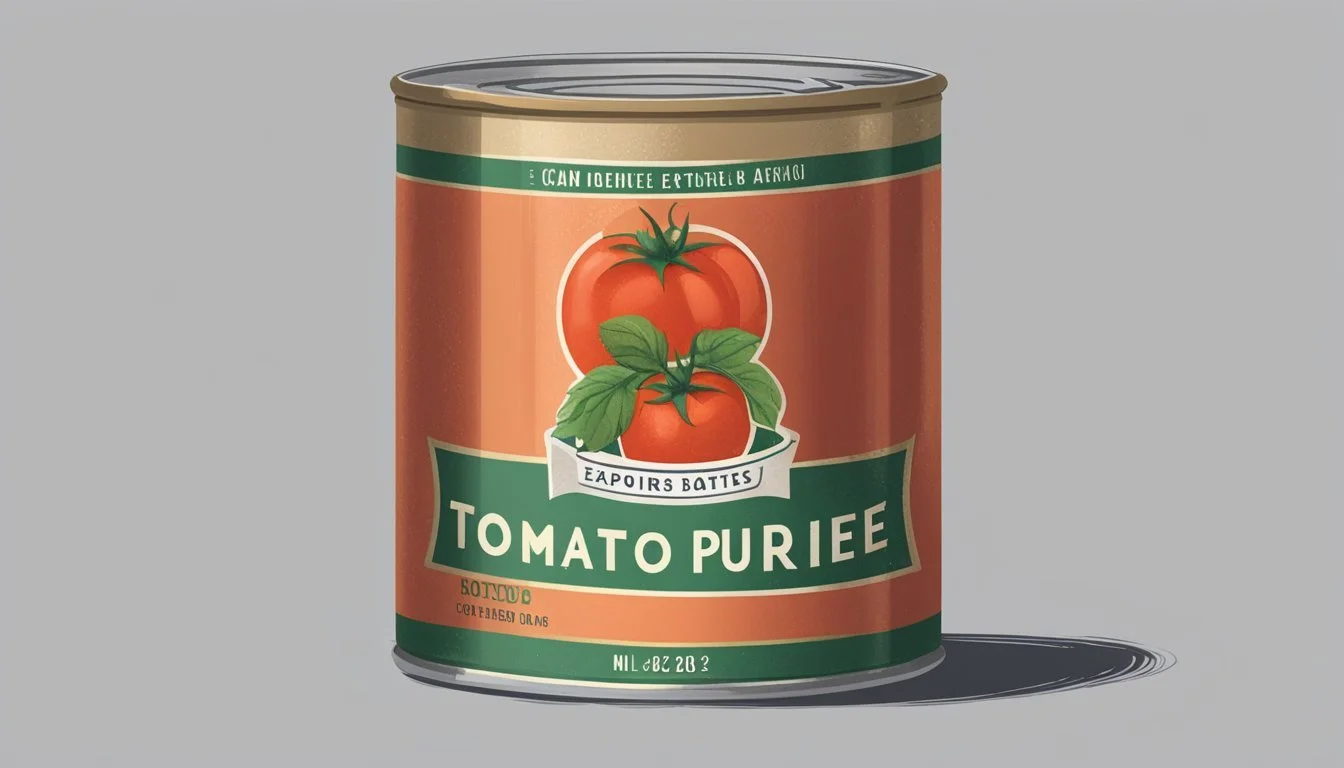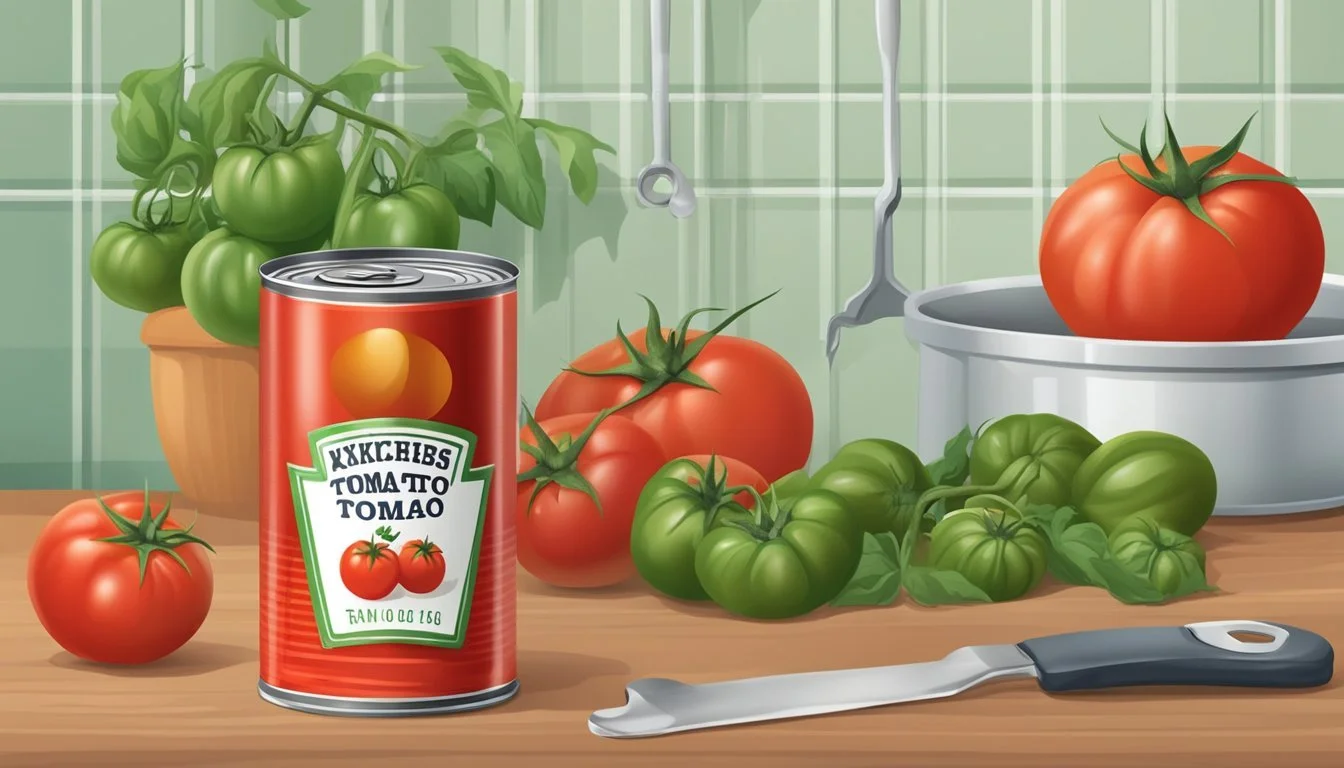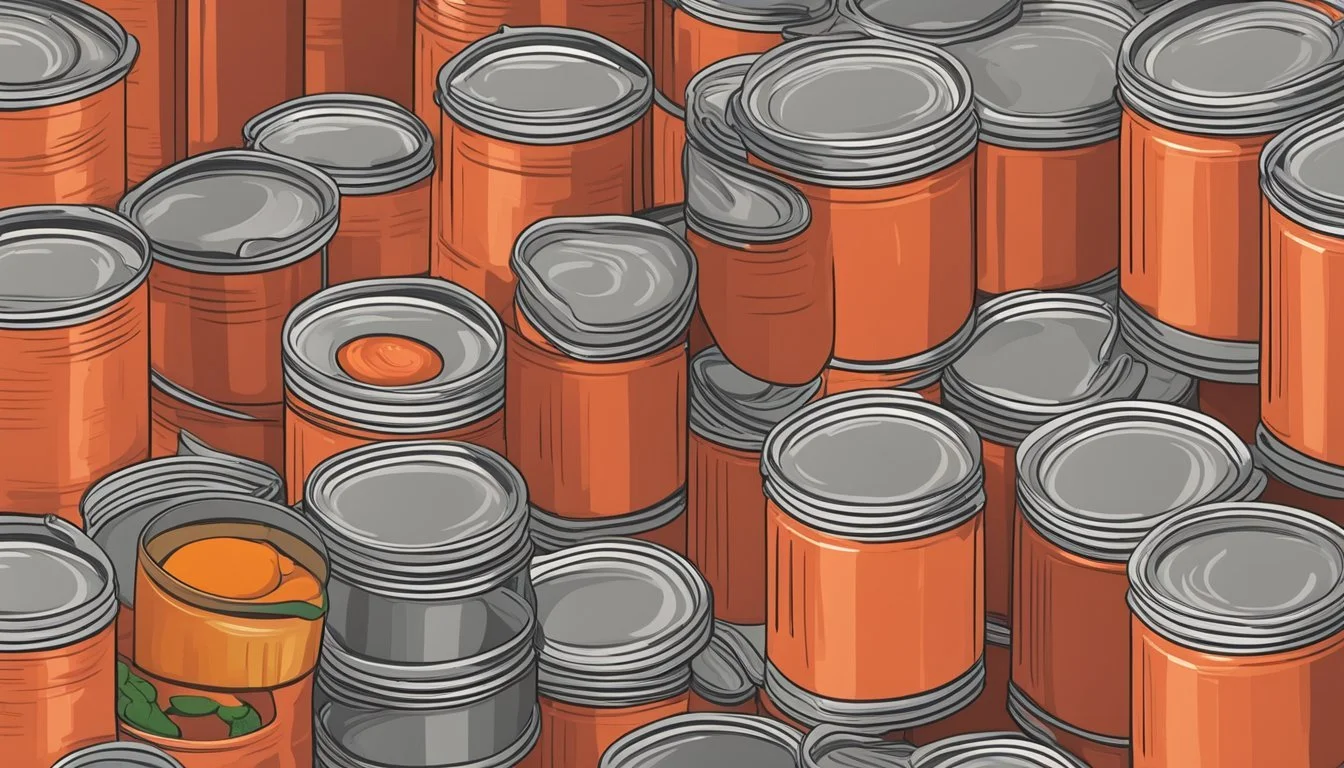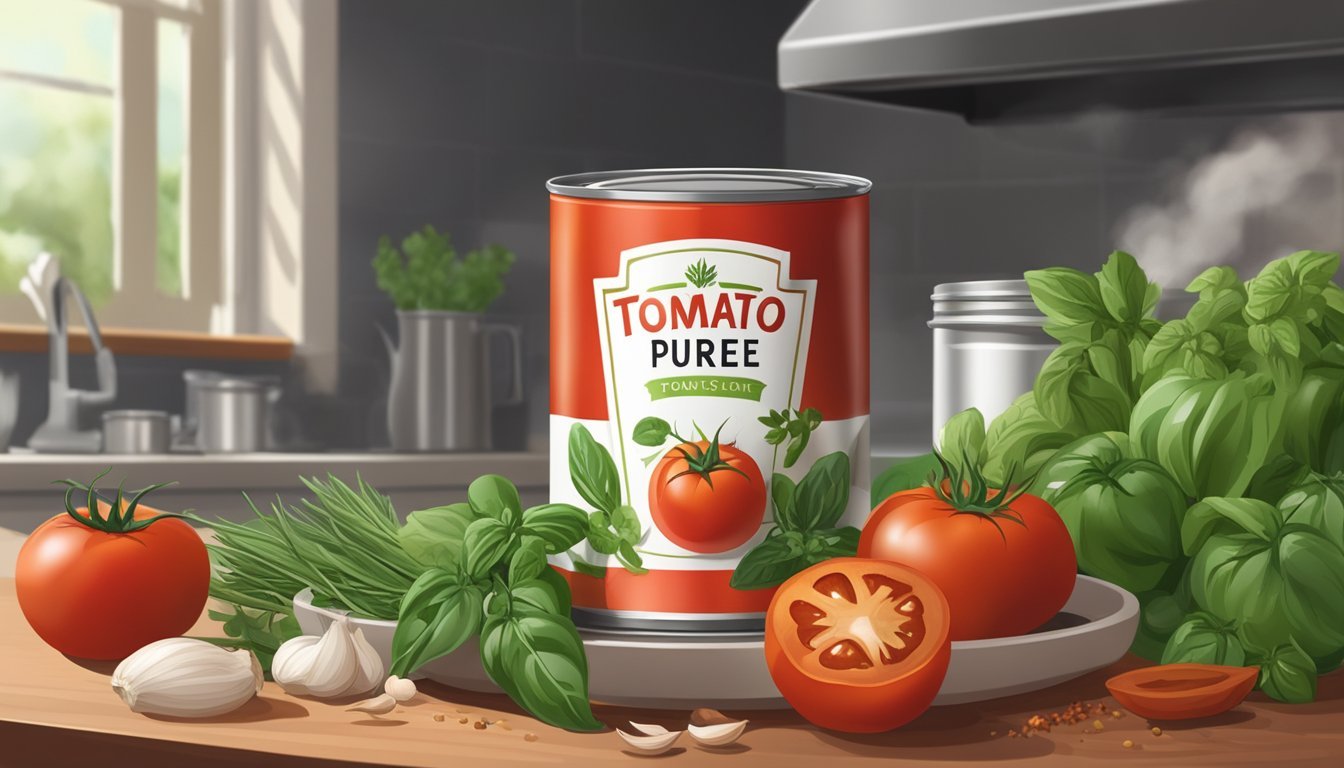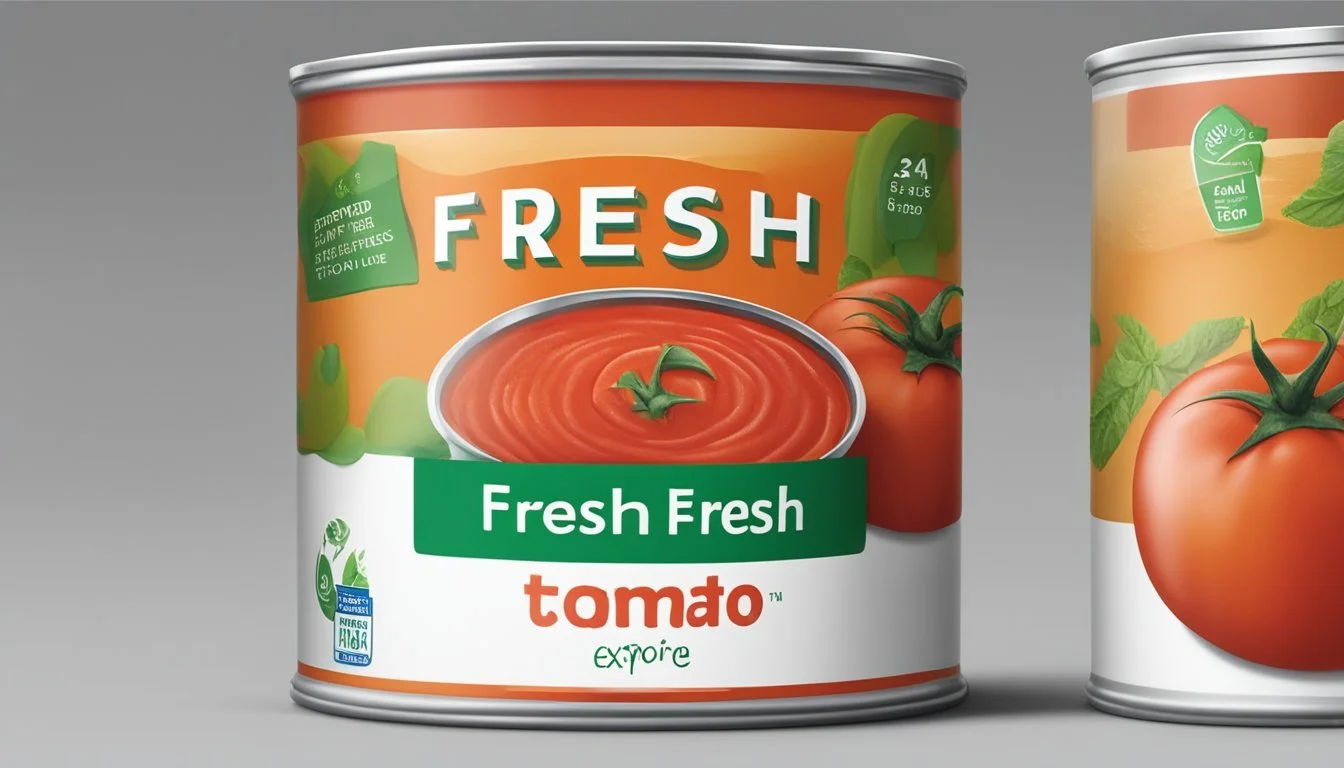Do Canned Tomato Puree Go Bad?
Shelf Life and Spoilage Signs
Canned tomato puree is a staple in many kitchens, but how long can you keep it before it goes bad? Unopened canned tomato puree can last for about 2-5 years past the expiration date, provided it's stored properly in a cool, dry place. This long shelf life makes it a convenient ingredient to keep on hand for adding depth and flavor to various dishes.
Once opened, canned tomato puree will generally last between 5-7 days in the refrigerator. Ensuring that it is stored in an airtight container can help maintain its freshness during this period. Factors like the quality of the puree and the type of container can influence its longevity.
It's crucial to know when your canned tomato puree has gone bad to prevent any foodborne illnesses. Signs of spoilage include the development of an off odor, flavor, or appearance. Always trust your senses and dispose of the puree if you notice any of these changes.
Understanding Canned Tomato Puree
Canned tomato puree is a versatile ingredient often used in various dishes, providing a rich flavor and nutritional benefits. This section will explore what canned tomato puree is, its nutritional profile, and how it's commonly used in cooking.
What Is Canned Tomato Puree?
Canned tomato puree is made by cooking tomatoes and then straining them to achieve a smooth consistency. It is thicker than tomato sauce but thinner than tomato paste. This puree is often used as a base for sauces, gravies, and soups.
The process begins by selecting ripe tomatoes, which are then peeled and deseeded. The tomatoes are cooked and blended into a smooth puree, which is then canned for long-term preservation.
Nutritional Profile
Tomatoes are rich in essential nutrients, making canned tomato puree a healthy addition to many recipes. A typical serving provides vitamins A and C, potassium, and folate. It also contains dietary fiber, which supports digestive health.
One of the standout components of tomato puree is lycopene, an antioxidant linked to various health benefits, including reduced risk of certain chronic diseases. Additionally, a half-cup serving tends to be low in calories, making it suitable for various diets.
Nutrient Amount per Serving Vitamin A 1000 IU Vitamin C 20 mg Potassium 400 mg Folate 10 mcg Dietary Fiber 2 g Calories 40 kcal Lycopene 10 mg
Common Uses in Cooking
Canned tomato puree is a staple in many kitchens due to its flexibility. It's used in a variety of dishes, ranging from pasta sauces to stews and soups. The puree provides a robust base that combines well with herbs and spices.
In Italian cuisine, it serves as a key ingredient in marinara and other sauces. For stews and soups, it enhances depth of flavor and consistency. Chefs and home cooks also use it to create rich gravies and casserole bases.
Canned tomato puree's ability to take on the flavor of other ingredients makes it an essential item for both simple and complex recipes.
Storage Insights
Proper storage methods are essential for maintaining the quality and safety of canned tomato puree. This section discusses optimal storage conditions, the shelf life and potential deterioration of canned tomato puree, and the benefits of freezing to extend its usability.
Optimal Storage Conditions
Canned tomato puree should be stored in a cool, dry area such as a pantry. Ideal storage temperature is around 68°F (20°C) to prevent spoilage.
Humidity should be low to prevent rusting or damage to the cans. Avoid storing cans in direct sunlight or in areas with fluctuating temperatures, as this can affect the quality of the puree. Once opened, transfer the puree to an airtight container and refrigerate to maintain freshness.
Shelf Life and Deterioration
Unopened canned tomato puree generally has a shelf life of 2-5 years, provided it is stored correctly. The "Best By" or "Use By" dates on cans indicate when the puree is likely at peak quality.
After opening, the puree can last 5-7 days in the refrigerator. Key signs of deterioration include off-putting odors, changes in color, and signs of mold. Always check the can for any damage such as dents, leaks, or swelling before use.
Freezing for Longevity
Freezing tomato puree can extend its shelf life significantly beyond refrigeration. Transfer the puree into freezer-safe containers or freezer bags.
Label and date the containers for easy tracking. Frozen tomato puree can last up to 6 months while maintaining good quality. Thaw the puree in the refrigerator overnight before use. This method is especially useful for preserving leftovers or bulk purchases. Always ensure the puree is well-sealed to prevent freezer burn.
Proper storage practices can ensure that canned tomato puree remains safe and flavorful for extended periods.
Identifying Spoilage
When assessing whether canned tomato puree has gone bad, it's crucial to look for specific signs such as visual changes, alterations in texture, and degradation in odor and flavor. Recognizing these indicators can help prevent food poisoning caused by harmful bacteria and microorganisms.
Visual Cues
Visual inspection is the first step in identifying spoiled tomato puree. Discoloration or darkening of the puree can signify spoilage. If the puree appears to have an unusual color, it should be discarded. Mold growth is another definitive sign of spoilage and can often be seen on the surface of the puree or around the lid of the can. Any visible mold means the puree is unsafe to consume.
Textural Changes
Spoiled tomato puree often exhibits changes in texture. Fresh puree should have a smooth consistency. If the puree becomes lumpy or grainy, it is likely spoiled. Separation of liquid can also occur, indicating that the product's quality has degraded. Any significant textural change is a sign that the puree should be discarded to avoid ingesting harmful bacteria.
Odor and Flavor Degradation
Off odors are a strong indicator that tomato puree has gone bad. A fresh can should have a rich, tomato scent. If the puree emits a sour or foul smell, it means spoilage has occurred. Flavor changes are equally important to consider. Tasting even a small amount of spoiled puree can lead to nausea or other symptoms of food poisoning. A metallic or off taste is a clear sign that the puree has deteriorated. Avoid consuming any puree that does not smell or taste fresh.
Packaging and Food Safety
Proper packaging ensures the safety and longevity of canned tomato puree. This section will cover the canning process, how to inspect cans for damage, and the health risks of compromised packaging.
Canning Process and Safety
The canning process involves sealing tomato puree in airtight cans to make them shelf-stable. This method prevents the growth of bacteria and other pathogens that could cause spoilage. During canning, tomatoes are heated to kill harmful microbes and enzymes that could deteriorate the product.
The "best by" or "best when used by" dates provided by manufacturers indicate peak quality. However, unopened cans stored in cool, dry places can remain safe to use for years beyond these dates. Ensuring the canning process is properly executed is crucial to maintaining the puree's safety and quality.
Inspecting Cans for Compromise
Regularly inspecting canned tomato puree for any signs of compromise is essential. Bulging, leaking, and rusting cans are red flags indicating potential contamination or spoilage. If a can is severely dented, particularly near the seams, it could be compromised.
It is important to discard any cans that show these signs, even if the "best by" date has not passed. Compromised packaging can introduce air and bacteria, rendering the tomato puree unsafe for consumption.
Health Implications of Damaged Packaging
Damaged cans can lead to serious health risks if consumed. Issues like bulging or leaking indicate possible bacterial activity, including growth of dangerous bacteria like Clostridium botulinum, which causes botulism. Rusting may indicate a breach in the can’s integrity, allowing contaminants inside.
Severe dents may also compromise the can's seal. Consuming tomato puree from damaged cans can result in foodborne illnesses. Always inspect cans thoroughly and prioritize safety over possible waste. Proper storage in a cool, dry place also minimizes the risk of packaging damage.
Enhancing Your Dishes
Choosing the right tomato puree and pairing it with complementary flavors can significantly elevate your dishes. Various qualities and seasonings can transform a simple puree into a versatile ingredient.
Selecting Quality Tomato Puree
When selecting tomato puree, quality is paramount. Look for purees made from Roma or San Marzano tomatoes, known for their rich flavor. Italian brands often offer a deeper and sweeter taste, ideal for many recipes.
Check the ingredient list to ensure there are no unnecessary additives. Tomato puree should primarily consist of tomatoes, sometimes with salt. Whole peeled tomatoes or plum tomatoes that are processed can yield a superior puree, preserving the natural taste and depth of flavor.
Using high-quality canned tomato puree adds a robust base to dishes like pasta sauce, stew, or soup. Many cooks avoid those with added sugars or preservatives, which can alter the natural tomato taste.
Flavor-Pairing and Seasoning
Flavor pairing and seasoning are crucial to enhance tomato puree. Incorporate herbs like basil, oregano, and thyme to complement the tomato's natural sweetness. Spices such as chili flakes, garlic, and black pepper can add a depth of flavor to your dishes.
For an Italian twist, add garlic and fresh basil. In pasta sauces, a splash of tomato juice or crushed tomatoes can intensify the flavor. For stews and soups, mix in diced or whole tomatoes to provide texture.
Balancing acidity with a touch of sugar or tomato paste can also smooth out the sauce. Experiment with seasoning blends to create customized flavors for various dishes. Combining these elements transforms a basic tomato puree into a culinary powerhouse.
The Role of Tomato Puree in a Balanced Diet
Tomato puree offers health benefits and adds culinary variety, making it a versatile ingredient in various dietary plans.
Health Benefits
Tomato puree is loaded with essential nutrients. It contains vitamins A, C, and E, important for immune function, skin health, and protecting cells from oxidative stress. The puree is rich in lycopene, an antioxidant known for its potential to reduce the risk of certain cancers and heart disease.
Low in calories and fat, tomato puree is ideal for weight management diets. It provides a good amount of fiber, which promotes digestive health and helps maintain a feeling of fullness. This makes it an excellent addition to a calorie-controlled eating plan.
Culinary Variety
Tomato puree is a versatile ingredient in a wide range of culinary applications. It forms the base for numerous Italian dishes, such as pasta sauces, soups, and stews. It pairs well with garlic and onions to enhance flavors.
Beyond Italian cuisine, tomato puree can also be used in various types of cooking, from Indian curries to Mexican salsas. Canned foods like tomato puree are convenient to keep in the pantry, ensuring a quick addition to any recipe without compromising on flavor or nutrition.
Dietary Considerations
When adding tomato puree to the diet, it’s important to consider its preparation and composition. Look for varieties with no added salt or preservatives like calcium chloride, commonly found in many canned tomatoes, to maintain a healthier profile.
Pay attention to skins and seeds if digestive concerns are present, as these can cause irritation for some individuals. Opt for smooth tomato puree to avoid these elements. Tomato puree is often free of allergens and integrates easily into various diets, catering to diverse nutritional needs.
Comparing Tomato Products
Tomato products come in various forms, each suited for specific culinary applications. Understanding the differences between these products helps in selecting the best option for your recipes.
Tomato Puree vs. Other Tomato Varieties
Tomato Puree: Made by cooking tomatoes briefly and straining out the seeds and skins, tomato puree is smooth and dense. It has a concentrated flavor, making it ideal for rich sauces and soups.
Tomato Sauce: Thinner and often seasoned, tomato sauce can include additional ingredients like herbs and spices. It is versatile for pasta dishes and casseroles.
Tomato Paste: Highly concentrated and thick, tomato paste is created by cooking tomato puree longer to reduce moisture. It is best for intensifying flavors in stews and sauces.
Canned Tomatoes: Available in various forms—whole, diced, crushed, and peeled—canned tomatoes retain the fruit's natural sweetness and texture. They are great for stews, chili, and slow-cooked dishes.
Fresh Tomatoes: Fresh tomatoes offer a bright, varied flavor but lack the concentrated taste of preserved forms. Recommended for salads, salsas, and light summer dishes.
Choosing the Right Product for Your Recipe
Tomato Puree: Ideal for smooth, thick sauces and soups. It provides a robust tomato flavor without any seeds or skins.
Tomato Paste: Use this for dishes needing depth and intensity, such as Bolognese sauce or hearty stews.
Canned Tomatoes: Whole peeled tomatoes are suitable for slow-cooked dishes, giving body and flavor. Crushed and diced tomatoes save prep time and are perfect for quick recipes like chili and stews.
Fresh Tomatoes: For dishes where the fresh, vibrant taste of tomatoes is front and center, such as salads and bruschetta, fresh tomatoes are unmatched.
Choosing the right tomato product ensures that the intended texture and flavor of your dish are achieved, enhancing your overall cooking results.

